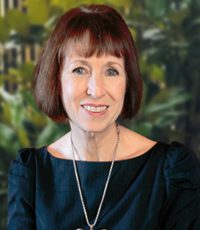Welcome to our final 2020 autumnal e-newsletter, which arrives as COVID-19 internal Australian travel restrictions start to ease and the prospect of visiting at least our near-home TERN sites is beckoning.
We are keen to see how TERN’s sites and instruments are faring, particularly those affected by bushfires, drought and/or floods earlier this year. A privileged few were able to visit the New South Wales Tumbarumba SuperSite in the past days to help set up temporary power. This allowed download of data from sensors that have been off-line all year due to the bushfire on New Year’s Eve.
It was astounding to learn that the Wet Eucalypt Forest, for which temperatures that reach the low thirty degree Celsius mark are normally at the upper end of their range, experienced temperatures around 400 degrees Celsius as the fire approached on that final December day in 2019. And at least some of the sensors survived, releasing data that will help researchers learn more about pre- and post-bushfire impacts.
When we look at a map of where TERN’s land observatory infrastructure is located across Australia, there are some obvious gaps – including the basin in the dry Tropic through which the Burdekin River, one of the largest river systems in Queensland, flows. We are therefore very pleased to be planning commencement this year of a three year pilot project to introduce eddy covariance flux measurement sensors into the Burdekin.
The project is possible due to co-investment into the TERN NCRIS project from James Cook University (JCU) and the Queensland State Government. The flux equipment will be placed at JCU’s Fletcherview Research Station, two hours west of Townsville. The area is used for cattle and covers black and red basalt soils and alluvial river flats and supports a wide variety of flora and fauna across open savannah woodland, dry rainforest, lava flows, three creek systems and the Burdekin River.
To TERN, the pilot project is an opportunity to obtain micrometeorological measures in an agricultural landscape, something that is uncommon in Australia but much needed since research has shown that two thirds of Australia’s net ecosystem productivity (carbon uptake) is estimated to be from within annual ecosystems, i.e., grasslands (see Haverd et al, 2013, Biogeosciences). Look out for more news later this year about the project.
Earlier in May, several of us from the TERN community stayed awake from 1am through to breakfast time over two nights. No, we were not watching meteor showers – we were at our computers and among the nearly 300 researchers from several countries participating in an NSF funded virtual workshop to learn more about forecasting using the data from the USA ecosystem observatory – NEON. The workshop’s focus was on developing forecasts for terrestrial carbon dynamics (e.g., flux tower and inventory data), water quality (e.g., temperature, dissolved oxygen, chlorophyll), and ecological populations/communities (e.g., ticks, mosquitoes, birds, community structure). We are very excited that the workshop leader, Associate Professor Quinn Thomas from Virginia Tech, will be a Visiting Scientist with TERN next year (regretfully postponed from this year due to COVID-19). It will be great to explore whether it is feasible to run a similar initiative in Australia with TERN data.
Just as our previous e- newsletter was distributed in April, we received news that a long-term supporter of TERN had died – Bob May, Lord Robert May of Oxford. Bob May was a former Chief Scientist of the UK and some of you will remember how honoured we were to have him as a participant and speaker at our 2013 Canberra Symposium (you can catch a glimpse of that event and Lord May below). Bob May was an Australian who made his mark in our field through his work on stability and complexity in ecosystems. He also contributed one of the first applications of chaos theory to biology – and even applied ecosystem thinking to shed light on the complexities of banking.
I will leave you to your reading of this newsletter with a quote from Bob May that is apt for TERN’s community: “Our values will indicate what questions we should be asking about the natural world and humanity’s impact on it…..Our science will ensure that the answers have a solid foundation.”
Dr Beryl Morris







